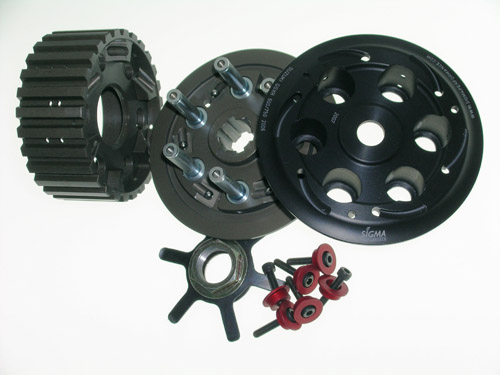Revamping the NMT
 Until relatively recently it has been acceptable to keep racing gearboxes relatively simple and add ancillary systems externally. But space inside a racecar is at an ever-greater premium, mainly due to the overriding demands of aerodynamics squeezing the internal volume in pursuit of better airflow. It was once perfectly acceptable for oil pumps and filters to be mounted in the lines to the gearbox oil cooler. But now these things are an unwelcome accessory and racecar designers want to see them integrated into the 'box.
Until relatively recently it has been acceptable to keep racing gearboxes relatively simple and add ancillary systems externally. But space inside a racecar is at an ever-greater premium, mainly due to the overriding demands of aerodynamics squeezing the internal volume in pursuit of better airflow. It was once perfectly acceptable for oil pumps and filters to be mounted in the lines to the gearbox oil cooler. But now these things are an unwelcome accessory and racecar designers want to see them integrated into the 'box.
Also, mechanical gear selection is very old hat and most single-seater drivers fully expect to see paddles behind the steering wheel to change ratios. But the actuators and their systems, whether they be hydraulic, pneumatic or electromechanical all take up extra space.
These were issues gearbox manufacturer Hewland was able to address when it started work on a revamped version of its mid-sized NMT [nineties medium transaxle] unit. Obviously the sensible solution is to incorporate these systems within the gearbox saving on size and weight. But they also contribute complexity and cost to an already price-sensitive component of a racecar. The big problem stems from the speed at which conventional oil pumps can run before they start to suffer cavitation and wear. Usually this is addressed using step down gears and an ancillary shaft to avoid overdriving the pump. But any such complication is unwelcome due to the pressure it puts on space and price.
Hewland's solution was to completely rethink the pump and dump the old three-gear design for a new concentric lobe unit that can run at higher speeds without cavitating. This could now be positioned on the end of the mainshaft running at gear speed. The pump is still a single-stage and the gearbox is still wet-sump although a double floor in the main casing baffles the oil, reducing surge.
Not content with this, Hewland then looked at how to drive an air compressor for the gearchange. Often this is dealt with by an electrically-driven compressor that draws energy from the battery and builds pressure in a reservoir. Hewland knew that removing yet one more ancilliary system from a racecar would be a welcome benefit for its customers. The solution was to extend the oil pump drive out of the back of the gearbox and straight into the centre of a compressor. The adoption of the lobe style pump made this possible and the in-house units were made larger specifically to allow a big enough drive to be extended through the centre.
Again this had gear speed considerations and careful design and specification of the unit was necessary to ensure it could work at all the revs required. In its first application, the new Formula Two spec car, the 'box would be operating at a mere 8250 rpm. However, on other applications, it can expect to run as fast a 12,000 or even 15,000 rpm. These demands led to Hewland again designing its own unit to fulfil that duty cycle reliably. The result is once more very compact and fully integrated into the overall unit. Pressure from this compressor actuates another refinement in the new design, single-acting shift actuators sitting inside two turrets either side of the top of the gearbox. This is not the first time Hewland has built a compressor into one of its gearboxes but it is the first time it has been achieved so simply and economically.
The position of both the oil and the compressor pumps has made them much more easily serviceable and self-contained. Even the oil filter has now been incorporated into the box with a paper element inside a transparent bowl that is both easily accessible and provides a fast visual check of the transmission oil level. A gauze filter for the feed to the pump is still incorporated to capture any larger pieces of debris before they enter the pump. The finer paper element has to be upstream of the pump as it creates a greater resistance to flow and pumps are better pushing than pulling.
Written by Charles Armstrong-Wilson.